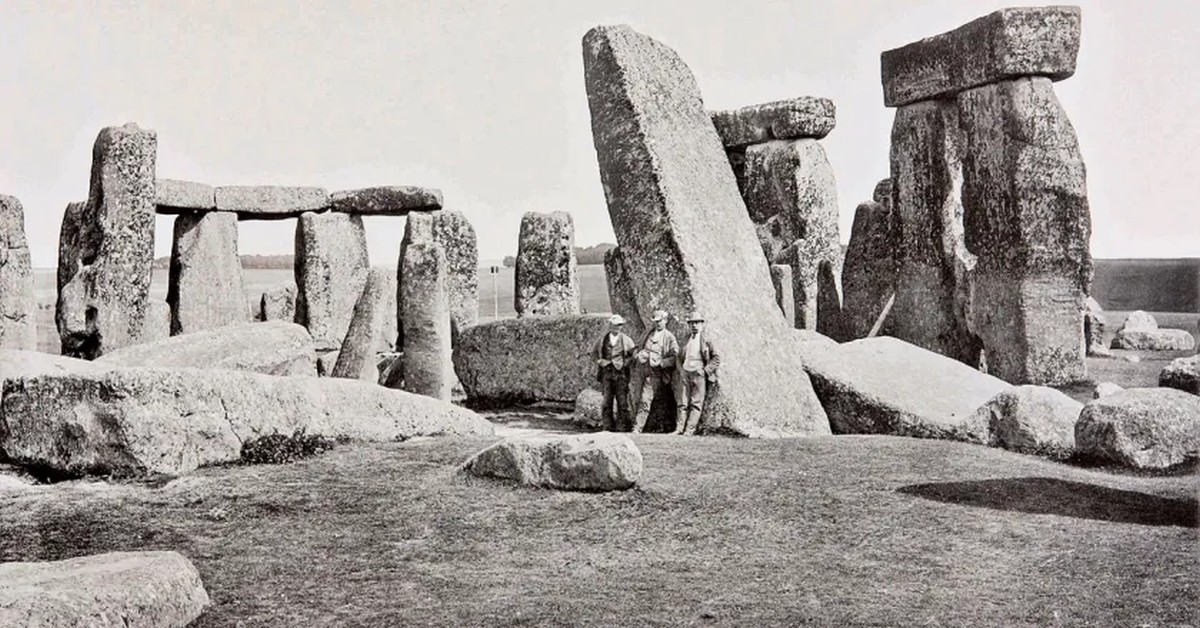A look at a more ‘romantic’ Stonehenge, untouched by archaeologists and restorers.

Stonehenge is a world-renowned prehistoric monument located in Wiltshire, England. This remarkable structure consists of a circular arrangement of massive sarsen standing stones – each around 13 feet (4.0 m) high, seven feet (2.1 m) wide, and some weighing up to 25 tons -set within earthworks and surrounded by a ditch.
Stonehenge is believed to have been constructed in multiple phases between 3100 and 1600 BCE, with its purpose and significance remaining a subject of debate among scholars.
The monument is widely recognized as an extraordinary feat of engineering and an emblematic symbol of ancient ingenuity, while it is also celebrated for its alignment with celestial phenomena (certain stones mark the position of the sunrise during the summer solstice).
The site attracts countless visitors every year, drawn to its mysterious aura and the sense of awe inspired by its imposing stone pillars.

But visitors today would be surprised to see how different Stonehenge looked in the 1800s, before restorations on the ancient monument started. Between the mid-1820s and 1915, the Antrobus family owned the place, with four consecutive owners all bearing the name Sir Edmund.
Throughout the thirty-year period when the third Sir Edmund held ownership (1870 to 1899), the quantity of leaning and fallen stones reached its highest point. While he advocated for unrestricted entry to the site, Sir Edmund also vehemently opposed the notion of restoring Stonehenge or making it more secure in any way.

However, following the death of the third Sir Edmund in 1899, a shift in attitude occurred. The fourth Sir Edmund sought counsel from the Society of Antiquaries and the Wiltshire Archaeological Society after the collapse of sarsen stone 22 and its accompanying lintel on December 31, 1900. These organizations recommended the straightening of three leaning stones and the reinstallation of three sarsens and two lintel stones.
However, the proposition to restore stone 56 to its upright position triggered a nationwide discourse due to its significant role in the evocative artworks of Constable and Turner that were emblematic of the Romantic interpretations of the monument.


Sir Edmund was determined, however, and the straightening of stone 56 was done over two months in August and September 1901, marking the beginning of a series of restorations peaking in 1901, 1920, 1958 and 1963.
During the 1920 restoration the base of six stones and the outer ditch were excavated and the concentric circular holes outside the Sarsen Circle called the Y and Z Holes were located.
Another major restoration effort took place in 1958, during which three of the standing sarsens were re-erected and anchored into concrete foundations.
The last restoration was carried out in 1963 after stone 23 of the Sarsen Circle fell over. It was successfully reinstated, and this occasion was utilized to concrete three additional stones, further securing their stability.

As a consequence of these various interventions, the overall appearance of Stonehenge has gone through a profound transformation. In fact, the monument has changed more in the 20th century than at any time since the Bronze Age.
Sources: 1, 2
